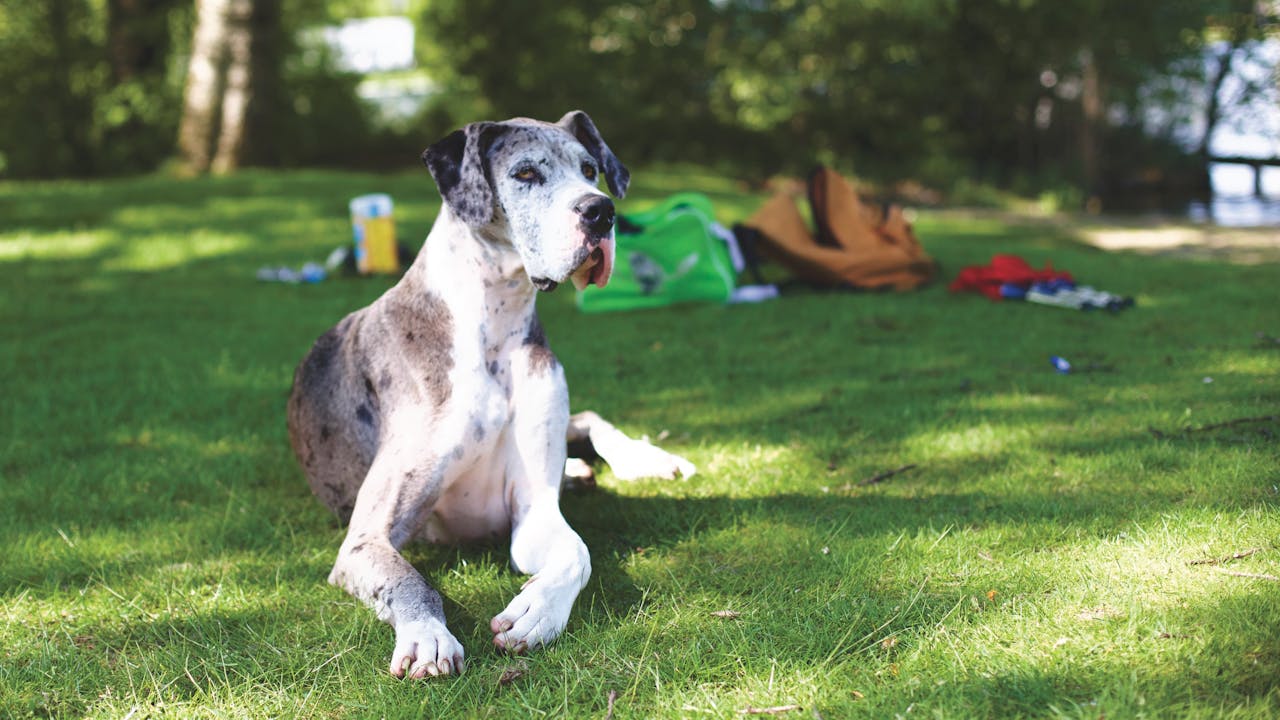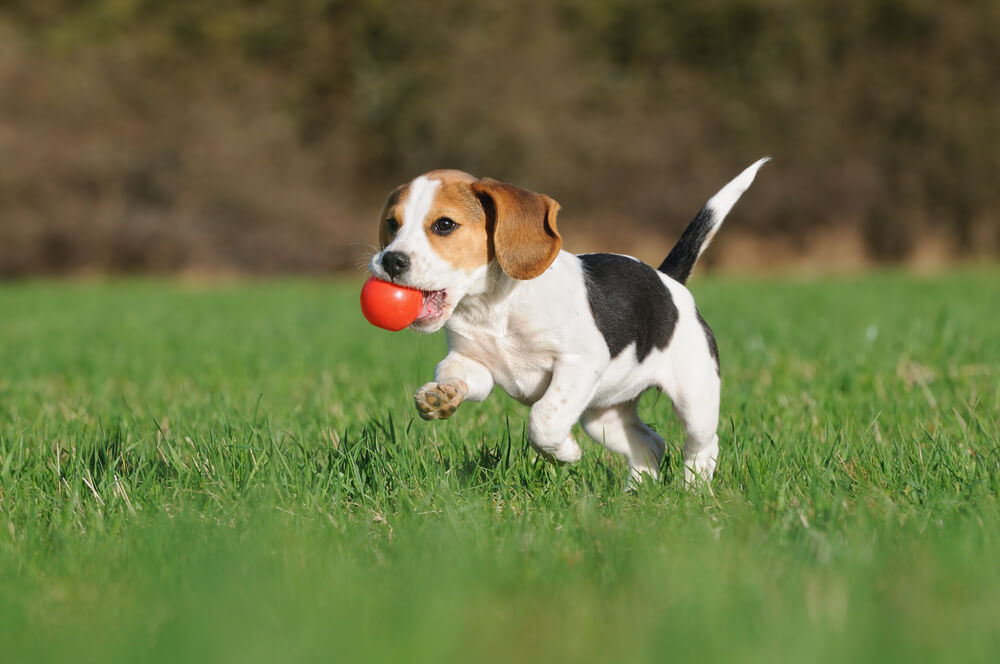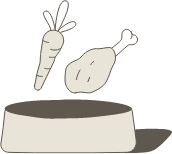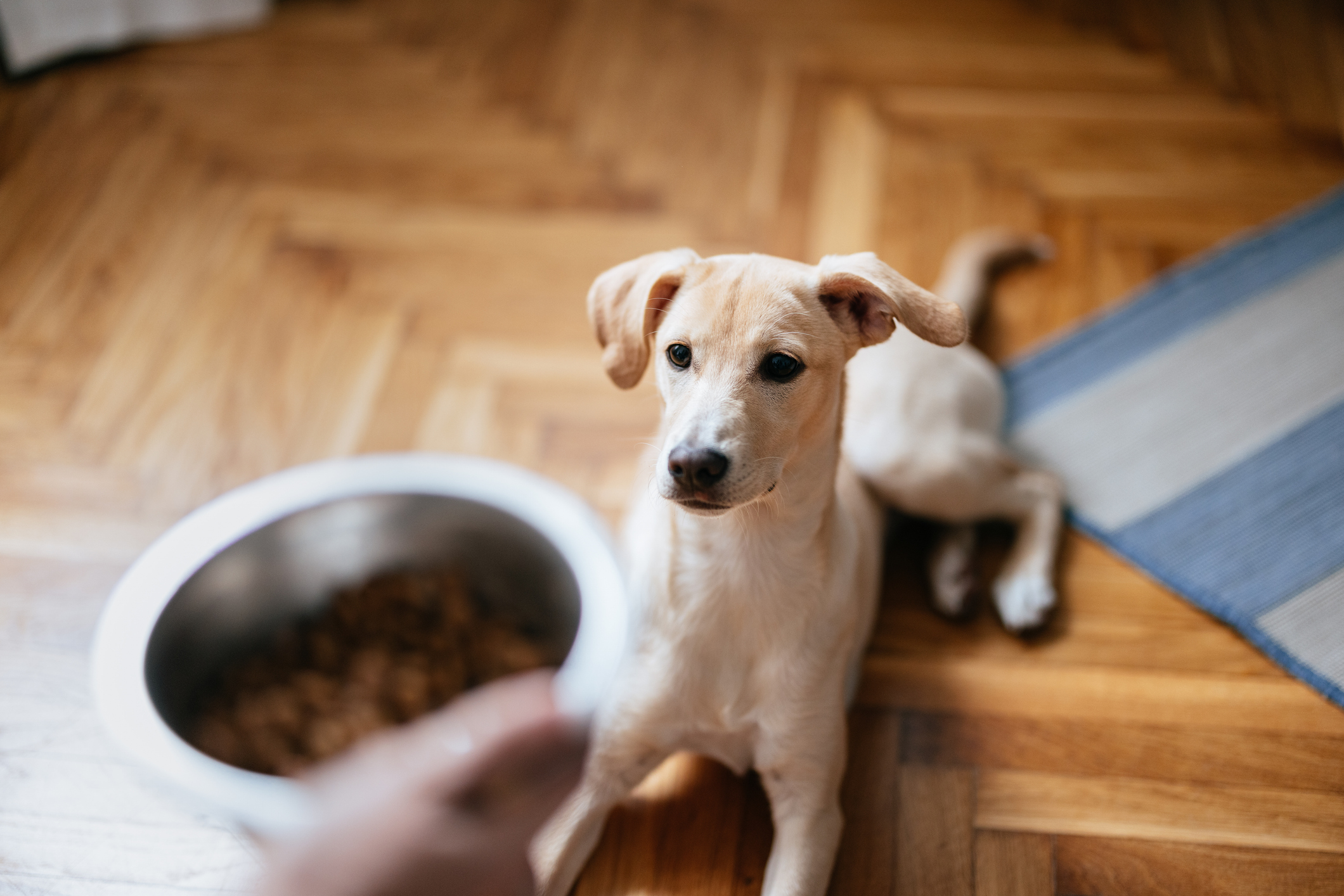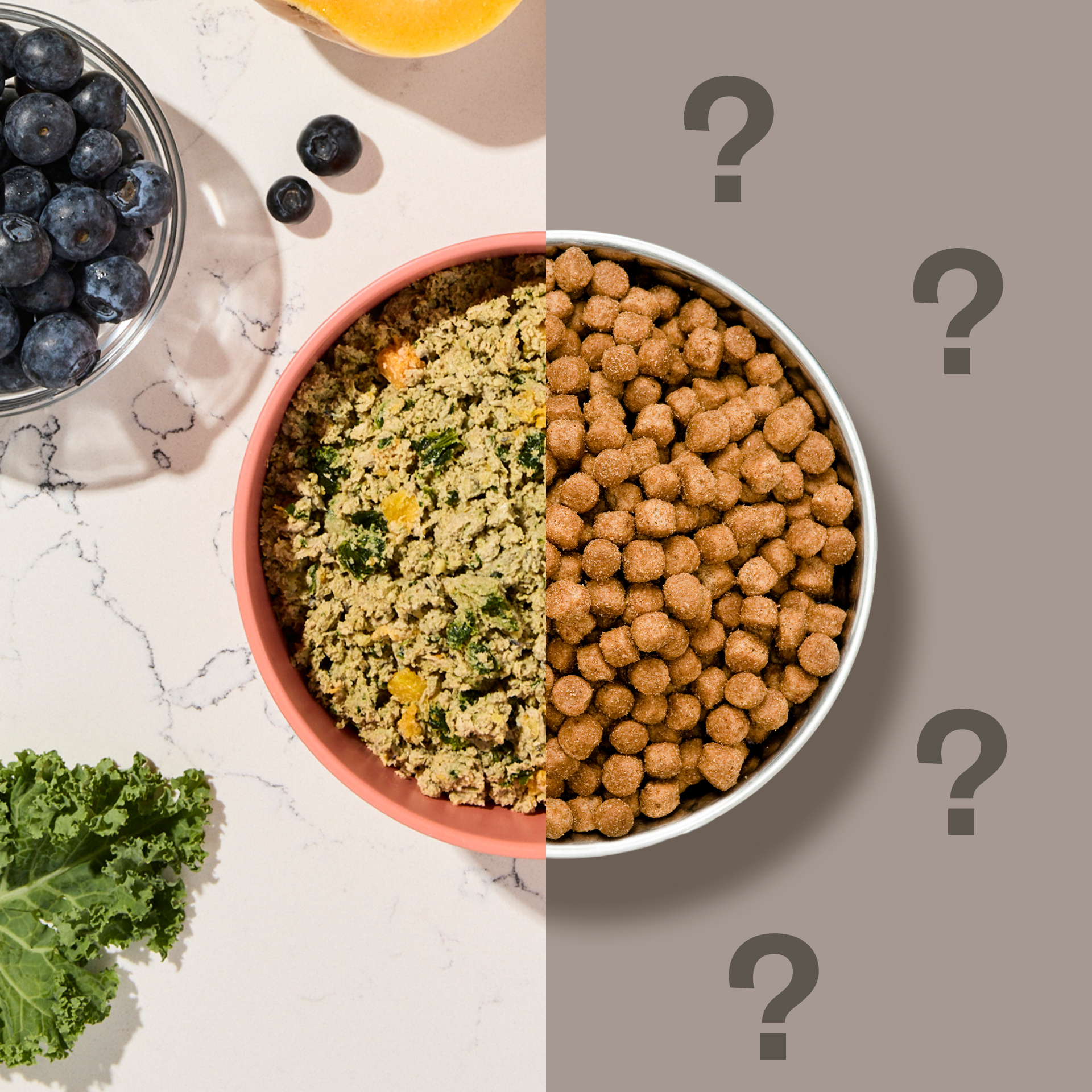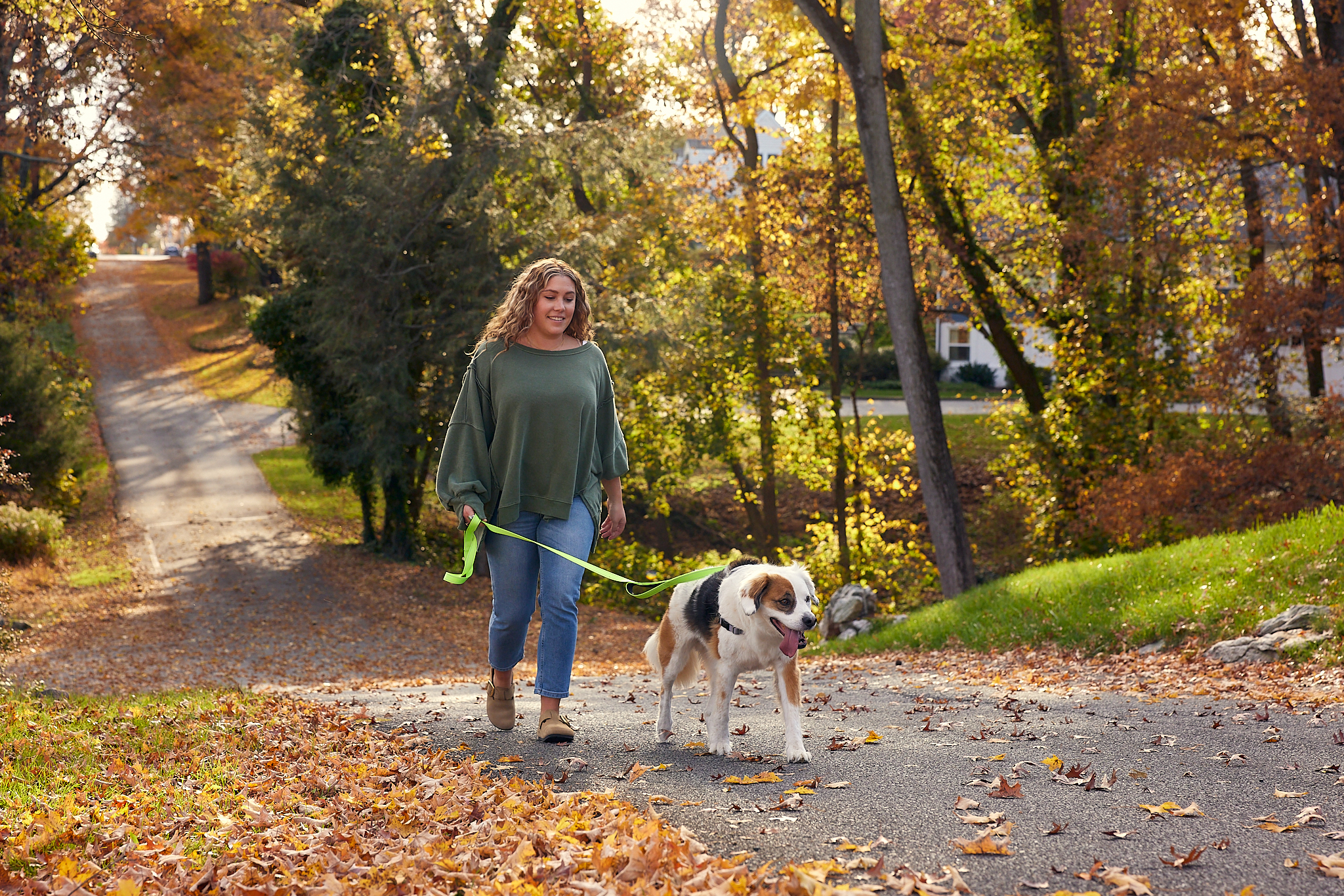Hey Ollie blog readers! We’re offering you an exclusive 60% OFF your starter box! Try now!
Hip dysplasia is one of the most common orthopedic conditions affecting dogs—especially large breeds. It happens when the hip joint doesn’t develop properly, leading to a loose, unstable connection between the ball and socket of the hip. Over time, this instability causes friction, pain, and deterioration of the joint. While genetics play a major role, lifestyle factors like diet, exercise, and weight management can influence how quickly the condition progresses and how severe it becomes.
With early diagnosis and supportive care, many dogs with hip dysplasia can live long, comfortable lives. In this guide, we’ll break down what causes hip dysplasia, how to recognize the signs, and which treatment options can help improve mobility and quality of life. We’ll also look at how fresh, nutrient-rich food—like Ollie Fresh Dog Food—can support healthy joints and reduce inflammation naturally.
What Is Hip Dysplasia in Dogs?
Hip dysplasia in dogs is a structural disorder of the hip joint. In a healthy joint, the ball at the top of the femur fits snugly into the socket of the pelvis, allowing for smooth, pain-free movement. In dogs with hip dysplasia, the joint is loose or misaligned, causing the bones to grind against each other rather than gliding smoothly.
This abnormal movement leads to progressive damage, including joint inflammation, cartilage wear, and eventual arthritis. Some dogs begin to show symptoms as early as a few months old, while others may not develop visible signs until later in life. In many cases, the condition is genetic, meaning it’s inherited and more likely to occur in certain breeds.
While it’s not curable without surgery, hip dysplasia can be effectively managed through a combination of lifestyle changes, medications, and supportive nutrition. Feeding a diet that promotes lean muscle mass and reduces inflammation—like Ollie human-grade Dog Food—is an important part of any long-term care plan. A diet made with real, whole ingredients can help maintain a healthy weight and provide the joint-supportive nutrients dogs need to stay active.
Causes of Hip Dysplasia in Dogs
Hip dysplasia is primarily caused by genetics, but environmental and lifestyle factors can also influence how and when the condition develops. Some breeds are predisposed to the condition due to inherited joint structure issues. Large and giant breeds—like German Shepherds, Labrador Retrievers, Golden Retrievers, Great Danes, and Saint Bernards—are most at risk, but it can also occur in smaller dogs.
Rapid growth during puppyhood is another contributing factor. When puppies are overfed or given food that’s too calorie-dense, their bones may grow faster than their joints can stabilize, leading to misalignment. That’s why it’s important to avoid overfeeding growing dogs and to choose a food that supports steady, healthy development.
Obesity significantly increases the risk and severity of hip dysplasia. Excess weight places added strain on unstable joints, accelerating the breakdown of cartilage and worsening pain over time. Maintaining a lean body condition is one of the most effective ways to reduce discomfort in dogs with this condition.
How Ollie Helps: Ollie Fresh Dog Food is portioned specifically for your dog’s weight, breed, and activity level. This helps prevent overfeeding and supports healthy weight maintenance—key factors in reducing stress on the joints. And because Ollie recipes use real, nutrient-rich ingredients, they help support lean muscle development and long-term joint health.
Signs and Symptoms of Hip Dysplasia in Dogs
The symptoms of hip dysplasia can vary depending on a dog’s age, size, and the severity of the condition. In young dogs, the first signs might be subtle—like hesitation to run or jump, or difficulty standing after rest. As the condition progresses, symptoms usually become more noticeable.
Common signs of hip dysplasia in dogs include:
- Limping or stiffness in the hind legs
- “Bunny hopping” gait when running
- Difficulty getting up, climbing stairs, or lying down
- Reluctance to exercise or play
- Loss of muscle mass in the back legs
- Pain or sensitivity when hips are touched
These symptoms may come and go, especially after periods of rest or increased activity. Over time, without treatment or lifestyle changes, they tend to become more persistent and painful.
If your dog is showing any of these signs, it’s important to consult with a veterinarian. Early intervention can help manage the condition more effectively and delay further joint damage.
How Hip Dysplasia is Diagnosed
Diagnosing hip dysplasia typically starts with a physical examination. Your veterinarian will assess your dog’s range of motion, watch how they walk, and feel for any looseness or instability in the hip joints. They may also check for signs of discomfort or muscle loss in the hind legs.
To confirm the diagnosis and evaluate the severity, your vet will recommend X-rays. These provide a clear image of the hip joint and show whether the ball and socket are properly aligned. X-rays also help determine how much arthritis or joint degeneration has already occurred. In some cases, sedation or anesthesia is used to allow for accurate positioning during the imaging process.
Early diagnosis is especially important for at-risk breeds or puppies from parents with known hip issues. Catching hip dysplasia before severe joint damage develops gives you more options for treatment and management, including dietary adjustments and activity planning to slow the condition’s progression.
Treatment Options for Dog Hip Dysplasia
There’s no single solution for hip dysplasia. The best treatment plan depends on your dog’s age, size, lifestyle, and how far the condition has progressed. In many cases, a combination of treatments is used to improve mobility, reduce pain, and support long-term joint health.
Non-Surgical Treatment Options:
- Weight management: Keeping your dog at a healthy weight is the most important part of managing hip dysplasia. Even a small amount of extra weight can put significant strain on the hips.
- Controlled exercise: Low-impact activities like short walks and swimming help maintain muscle strength without stressing the joints.
- Pain relief medications: Your vet may prescribe non-steroidal anti-inflammatory drugs (NSAIDs) or other pain relievers to reduce inflammation and discomfort.
- Joint supplements: Nutrients like glucosamine, chondroitin, and omega-3 fatty acids support joint function and may slow cartilage breakdown.
How Ollie Helps: Ollie Fresh Dog Food supports dogs with hip issues by offering balanced nutrition that promotes lean body mass, which reduces pressure on the joints. High-quality proteins and anti-inflammatory ingredients—like omega-3-rich meats—can help manage discomfort naturally.
Ollie functional chews, such as Hip & Joint Supplement Chews or Skin & Coat Supplement Chews are a convenient way to provide additional nutrients and support to your dog’s diet.
Surgical Treatment Options:
For dogs with severe hip dysplasia that doesn’t respond to non-surgical care, surgery may be necessary. Common procedures include:
- Femoral Head Ostectomy (FHO): Removes the ball of the hip joint to eliminate painful bone-on-bone contact.
- Total Hip Replacement (THR): Replaces the entire joint with an artificial implant, restoring function and comfort.
Surgery is generally reserved for dogs with significant pain or loss of mobility, and recovery often requires physical therapy and careful management.
Nutrition and Joint Health
Nutrition plays a central role in both preventing and managing hip dysplasia. A dog’s weight has a direct impact on joint stress—excess weight increases pressure on the hips, accelerating cartilage damage and inflammation. Keeping your dog at a healthy weight is one of the most effective ways to minimize pain and slow the progression of joint deterioration.
Beyond weight management, certain nutrients are especially helpful for supporting joint function. Omega-3 fatty acids help reduce inflammation, while glucosamine and chondroitin contribute to joint repair and cartilage strength. Lean proteins help maintain strong muscles, which are essential for stabilizing weak joints.
How Ollie Helps:
Ollie Fresh Dog Food is crafted with real, whole foods that provide essential nutrients without unnecessary fillers or artificial additives. Because it’s personalized to your dog’s ideal weight and activity level, Ollie helps prevent overfeeding while supplying the building blocks for joint health—like high-quality animal proteins and omega-3s from ingredients such as beef, turkey, and fish. This makes it easier to manage weight while giving your dog the nutrition they need to stay mobile and comfortable.
Preventing Hip Dysplasia or Slowing Its Progression
You can’t always prevent hip dysplasia—especially if it’s genetic—but you can take steps to delay its onset and reduce its severity. Prevention starts early in life and continues with consistent care into adulthood and senior years.
Key strategies include:
- Feeding a balanced diet during puppyhood to promote slow, steady growth. Avoid overfeeding or giving high-calorie foods that encourage rapid weight gain in large-breed puppies.
- Maintaining a healthy weight throughout your dog’s life to reduce stress on developing or compromised joints.
- Supporting joint health early on with omega-3s and joint-friendly nutrients found in supplements or fresh foods.
- Providing controlled, low-impact exercise, like walking and swimming, to build strength without putting stress on growing joints.
- Regular veterinary check-ups, especially for breeds predisposed to hip problems, to catch signs early and start supportive care if needed.
How Ollie Helps: From puppyhood to adulthood, Ollie Fresh Dog Food supports lifelong joint health with nutrient-dense recipes that fuel strong muscles and help maintain a healthy body condition. If your dog is prone to joint issues, starting with a high-quality, personalized diet is one of the smartest long-term choices you can make.
Final Thoughts on Hip Issues In Dogs
Hip dysplasia is a serious condition, but it doesn’t have to define your dog’s quality of life. With the right approach—including early intervention, supportive care, and long-term lifestyle adjustments—many dogs live active, happy lives well into their senior years.
Managing weight, providing low-impact exercise, and supporting joint health through nutrition are key to slowing progression and minimizing pain. A fresh, nutrient-rich diet like Ollie Human-Grade Dog Food gives your dog the building blocks they need to stay strong, lean, and mobile. And when paired with regular vet care and, if needed, supplements or medications, it becomes part of a complete strategy to support your dog’s joints for the long haul.
If your dog is showing signs of hip discomfort or you’re caring for a breed at risk, now is the time to start taking steps that support joint health—for today, and for the years ahead.
Frequently Asked Questions About Hip Dysplasia in Dogs
What are the first signs of hip dysplasia in dogs?
Early signs often include stiffness after rest, limping, a swaying or “bunny hopping” gait, reluctance to jump or climb stairs, and general weakness in the hind legs. These symptoms may come and go at first but typically get worse over time without treatment.
Can hip dysplasia in dogs be cured?
Hip dysplasia cannot be cured without surgery, but many dogs can live comfortably with the condition through weight management, physical therapy, joint supplements, and anti-inflammatory medication. Surgery is usually considered for severe cases that don’t respond to conservative treatments.
What breeds are most prone to hip dysplasia?
Large and giant breeds such as German Shepherds, Labrador Retrievers, Golden Retrievers, Rottweilers, and Great Danes are most commonly affected. However, the condition can also appear in smaller dogs, especially if they’re overweight or genetically predisposed.
How is hip dysplasia different from arthritis?
Hip dysplasia is a structural issue with how the hip joint is formed, usually present from a young age. Arthritis refers to joint inflammation and degeneration, which often results from chronic instability—like that caused by hip dysplasia. In many cases, dogs with hip dysplasia eventually develop arthritis.
Can diet help manage hip dysplasia in dogs?
Yes—diet is one of the most effective tools for managing this condition. A fresh, balanced diet helps maintain a healthy weight and supports joint health with natural anti-inflammatory nutrients. Ollie Fresh Dog Food provides the right balance of lean proteins, omega-3 fatty acids, and essential vitamins to support joint function and reduce stress on the hips.
What are the best exercises for dogs with hip dysplasia?
Low-impact activities like swimming, leash walking on flat ground, and gentle play help strengthen muscles and improve mobility without placing too much pressure on the hips. Avoid high-impact activities like jumping or rough terrain running.
Is surgery always necessary for dogs with hip dysplasia?
Not always. Many dogs respond well to a combination of non-surgical treatments, especially when hip dysplasia is caught early. Surgery may be considered if your dog is in chronic pain or has difficulty moving even with lifestyle and medical support.
Tagged As:
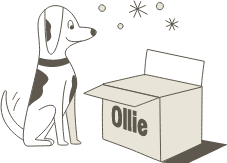
The nutrition your dog needs,
the food they want.

Enjoying our articles? Subscribe our Newsletters and get new articles directly to your inbox
You might also like
12 August 2025
5 MINS READ
Top 8 Allergens Hiding in Your Dog’s Bowl
As pup parents, we never want to see our dogs uncomfortable. When it comes to itching, swelling, and upset stomachs, the culprit may be in their bowl. Understanding the most common allergens and t…
by Ollie Pets
11 August 2025
5 MINS READ
Not all Processing Is Equal: What’s Really in Your Pet’s Bowl?
As pet parents, we know how important it is that our dogs live long, healthy, and happy lives. This is why at Ollie, we focus so much on what goes into their bowls. But did you know there may be s…
31 July 2025
4 MINS READ
The Healthiest US States for Dogs
The Ollie Health team, a team of veterinarians and veterinary technicians, reviews thousands of photos submitted through Ollie’s Health Screening service. That’s hundreds of dogs (and their st…
by Ollie Pets
